Unseen part: The windtunnel tires
Way before hitting the track
- -
- -

There is currently a lot of discussion about tires in F1. My opinion is that there is an excess of, with reasons and consequences that would merit a deep analysis, but this is a different story…
The discussion is mainly about how the current tire
characteristics and those related to the new spec coming for the
Canada GP would affect the car’ performance, who will benefit, who
will suffer, who will understand, who will not. Rivers of
words about this matter are at the reader’s disposal in lots of
different places, hence my humble contribution in that direction
would simply risk being lost in the words-battle…
Instead, let me try to offer a not so obvious contribution to this
never-ending discussion, by briefly talking about how F1 tires are
able to give more than one headache to all the engineers,
designers, technicians, and workers who, on a daily basis, have to squeeze the best
aerodynamic performance from the cars you see on your TVs.
Tires are critical in getting the aerodynamics right for an F1 car,
so finding a good way to represent the complexity of a real tire in
all the processes involved in the aerodynamic development is a
serious challenge, above all when the overall tire shape is
supposed to change. Mr. Hembery from Pirelli confirmed this in an
interview of Nov. 2012 when, talking about 2013 spec, he said:
“…..we know that the changes we've made will have an influence
on things like aerodynamics for the teams; tires will deflect more,
the rear tyre in particular”. (source: http://en.espnf1.com/f1/motorsport/story/95527.html).
Before the introduction of the so called “rubber" wind-tunnel
tires, i.e. the scaled-down tire-replicas, with both 50% and 60%
scale tires now available, the “community” I belong to was used to
deal with “solid” tires (made of nylon, carbon, aluminium, etc…) to
equip the car-model for wind-tunnel aero tests: round, solid,
simple, cheap.
Ok, we were perfectly aware of the limitation of this approach but,
you know, the solution was not so obvious at that time… To be
honest, the most visionary engineers dedicated some resources to
precursory deformable tires, but we all knew that a serious
tire-manufacturer should have been involved to have acceptable
results (my “laboratory” attempts with home-made rubber-tires at
the beginning of ’90 are deliberately never mentioned in my CV!).
This eventually happened with Bridgestone and Michelin some years
ago, when they started supplying the first attempts of scaled-down
replicas. Engineers where excited about them, but feeling that was
rapidly accompanied by initial frustration and stress while trying
to “dominate” the small, black shapes finally at our disposal. A
great experience, which thank god is done!
To explain part of the reasons behind the initial troubles please
be aware that the “tunnel tires” have to be designed with goals
that were simply anti-intuitive for the engineers constantly
focused to extract performance from the full scale units. These
“toys” need to be durable (nowadays, a wind-tunnel tire-set can
easily last for a distance that is well longer than the
tour-around-the-globe), they need to deliver low level of grip
(this to be able to generate “slipped” conditions without the risk of
finding the model on top of the control-room desk…), they have to
deform and generate the contact-patch (the “foot-print” on the
ground) like their big sisters, but under very low level of loads
and while revolving at constant RPM, this being higher if compared
to full-scale units. Also, they should not modify the tire surface
with time (look at real tires after a few laps…), they need to
offer constant behaviour both during the single-set life and “set
to set”, this not to affect tunnel testing with repeatability
issues and waste time to recover.
If initially aeros were more than happy to reach a sort of stable
tire behaviour with some compromises between tire-life and
shape-similarity, the research immediately started to be more and
more driven by the “absolute need” to have the closest
representation of the real tire deformation, virtually in any car
conditions (low speed, high speed, corner, braking, etc…). In fact,
with the evolution of tools like CFD, PIV, track measurements, etc…
the community did realize that the possibility to be competitive,
aero speaking, was absolutely proportional to the ability to
maximize the representativeness of the scaled-down tires.
In a few and poor words, this goal is dictated by the need of
replicating with the highest level of fidelity all the
aerodynamic-interactions between the tire-body and the “neighbors”
(front-wing, front brake-ducts, aero elements inside the rims,
suspension-arms, and ground). This is essential for generating a
“tire wake”, so complex in terms of flow-features and impacting to
the nature of the flow around the car, as similar as possible to
that experienced by the real car on the track. The sophistication
of the modern aerodynamics simply cannot tolerate that this aspect
is not considered seriously.
If at the beginning of this technical challenge the
tire-manufacturer would change the structure of the track-tires,
hence altering both the contact-patch and the deformed 3D
“profile”, this would almost be ignored by the aeros: their
problems were an order of magnitude above… Now, instead, it is
compulsory to react as fast as possible to align the tunnel tires
to any shape-change, even of few mm, directly or indirectly
announced by the manufacturer. The level of the importance of this
aspect is such that, even before receiving from the manufacturer
the official data of a new tire-spec (vertical/lateral deformation
under load conditions), aero engineers are sometime used to
“speculate” on the future tire shape by altering the control
parameters of the scaled-down tires at their current disposal to be
aware of the most important “what if”.
Scaled-down tires are carefully tested and measured before going in
to the tunnel, this process being also useful to filter out “bad
tires”. Once in the tunnel, they are individually loaded by
controlled actuators, constantly monitored in terms of external
profile, surface-temperature, internal pressure, slip rate,
vertical deformation, and so on… All this to be sure that the shape
is “as full scale” (and usually more than one shape, depending on
the car setting to replicate and specific to each of the four
“corner”), and well under control.
As “satellite accessories” to govern the process, let me just
mention the need of having customized balancing-machine: rubber
tires are not, by definition, perfect revolution-shapes! Bouncing
will affect both tire-life and the general quality of the
aero-test. Customized changing-tire machine is also required. Last
but not least, shape-database and statistical analysis-tools are
created to follow the spec evolutions and to know about tire-life
and end-of-life “cliff window”; this because the number of tire-set
for tunnel testing is prescribed, hence timing for changing from
used to new set has to be optimal.
All these efforts to be sure that the aerodynamic experiments, so
complex and expensive, would direct the development correctly and
efficiently. Time-wise, there is not too much to be wrong. An
incorrect tire usage in the wind tunnel, when not understood in
time, would inevitably misdirect the development, and the risk that
it can be too late is significantly high!
The problem relevant to the representativeness of tires is,
unfortunately, not just confined in the wind-tunnel related
activities. CFD is, inevitably, an environment that cannot be
excluded from this paranoiac battle. Having the “virtual” tires
always in well agreement with tunnel and track is a must, but much
less simple and fast as it can be imagined. This mainly because of
the high complexity behind setting-up of an F1-level CFD
calculation (where ride-changes, steering, roll and yaw effects are
analyzed) and the numerical difficulties while dealing with
high-proximity areas like the boundary of the contact-patch.
Persisting too much with “wrong” shape for this peculiar element of
the aero-development chain is equally risky as for the tunnel
testing. As support, complex tools like CAD parametric tire-model
and automatic mesh-deforming are constantly developed.
Teams spend important resources to train dedicated people inside
their aero depts. to look after this strategic aspect. Tire-skilled
mechanical engineers, aerodynamicist (WT and CFD), designers,
electronics and model-makers are essential roles nowadays, forming
a sort of “tire-team” constantly on top of this matter.
Few words but, I hope, enough to give an idea of “what’s behind” a
F1 tire-spec in terms of implications to the aerodynamic
development. The best-organized teams (not necessarily the biggest
ones…) that are better prepared to manage this sophisticated
technology have more chances to be successful.
Tire-related competitiveness starts well before the track!




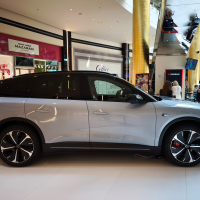
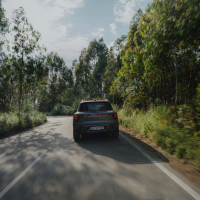
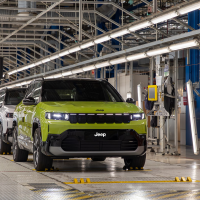
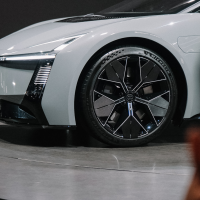

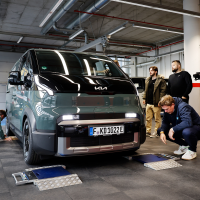






 και στη συνέχεια 'Προσθήκη στην οθόνη αφετηρίας'
και στη συνέχεια 'Προσθήκη στην οθόνη αφετηρίας'